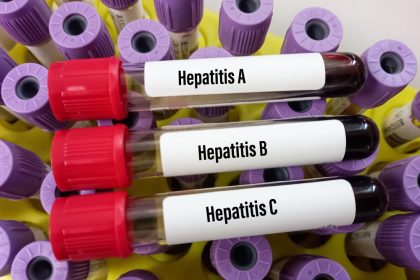Every 40 seconds, someone in the United States has a stroke. It’s the fifth leading cause of death and a major cause of disability, but here’s the encouraging news: up to 80% of strokes are preventable through lifestyle choices you can start making today.
These four evidence-based strategies can dramatically reduce your stroke risk and improve your overall health at the same time.
Control your blood pressure like your life depends on it
High blood pressure is the single most important modifiable risk factor for stroke. When your blood pressure stays elevated, it damages blood vessels throughout your body, including the delicate vessels in your brain. This damage makes blood clots more likely and weakens vessel walls that could rupture.
The target blood pressure for most adults is less than 130/80 mmHg, but many people don’t even know their numbers. Regular monitoring is crucial because high blood pressure typically has no symptoms until it causes serious damage.
If your blood pressure is elevated, lifestyle changes can make a significant difference. Reducing sodium intake to less than 2,300 mg daily (ideally 1,500 mg), losing even modest amounts of weight, and exercising regularly can lower blood pressure naturally.
When lifestyle changes aren’t enough, blood pressure medications are highly effective at reducing stroke risk. Don’t let fear of side effects or cost prevent you from taking prescribed medications — the protection they provide far outweighs the risks.
Move your body regularly and consistently
Physical activity strengthens your heart, improves circulation, helps control weight, and lowers blood pressure — all factors that reduce stroke risk. You don’t need to become a marathon runner; even moderate exercise provides substantial protection.
Aim for at least 150 minutes of moderate-intensity aerobic activity per week, which breaks down to just over 20 minutes daily. This could be brisk walking, swimming, cycling, or any activity that gets your heart rate up and makes you breathe a little harder.
Strength training exercises twice weekly provide additional benefits by improving overall cardiovascular health and helping maintain muscle mass as you age. Resistance training also helps control blood sugar levels, which is important for stroke prevention.
The key is consistency rather than intensity. Regular moderate exercise is far more beneficial than occasional intense workouts. Find activities you enjoy so you’re more likely to stick with them long-term.
Eat to protect your brain and blood vessels
A brain-healthy diet emphasizes foods that support cardiovascular health and reduce inflammation. The Mediterranean diet pattern has strong evidence for stroke prevention and includes plenty of fruits, vegetables, whole grains, lean proteins, and healthy fats.
Focus on foods rich in potassium like bananas, spinach, and beans, which help counteract sodium’s effects on blood pressure. Omega-3 fatty acids from fish, nuts, and seeds support brain health and reduce inflammation in blood vessels.
Limit processed foods, which are typically high in sodium, unhealthy fats, and added sugars. These foods contribute to high blood pressure, diabetes, and obesity — all major stroke risk factors.
Watch your portion sizes and eating patterns. Even healthy foods can contribute to weight gain if eaten in excessive amounts. Maintaining a healthy weight reduces strain on your cardiovascular system and helps control blood pressure and blood sugar.
Quit smoking and limit alcohol consumption
Smoking doubles your risk of stroke by damaging blood vessel walls, increasing blood clot formation, and raising blood pressure. The chemicals in tobacco smoke make your blood thicker and more likely to clot, while also making blood vessels more prone to rupture.
The good news is that stroke risk begins dropping immediately after quitting smoking. Within one year of quitting, your stroke risk is cut in half compared to when you were smoking. Within five years, it approaches that of someone who never smoked.
Excessive alcohol consumption increases stroke risk through multiple mechanisms, including raising blood pressure, contributing to irregular heart rhythms, and increasing the likelihood of blood clots. However, moderate alcohol consumption may have some protective effects.
If you drink alcohol, limit consumption to no more than one drink daily for women and two drinks daily for men. If you don’t currently drink, don’t start for health reasons — the potential benefits don’t outweigh the risks.
Managing other important risk factors
Diabetes significantly increases stroke risk by damaging blood vessels and promoting blood clot formation. If you have diabetes, work closely with your healthcare team to maintain blood sugar levels as close to normal as possible.
Atrial fibrillation, an irregular heart rhythm, increases stroke risk five-fold by allowing blood clots to form in the heart. If you have this condition, blood-thinning medications can dramatically reduce your stroke risk.
High cholesterol contributes to stroke risk by promoting plaque buildup in arteries. Regular cholesterol screening and appropriate treatment with lifestyle changes or medications can help protect against stroke.
The power of prevention
These stroke prevention strategies work best when implemented together rather than in isolation. Small changes in multiple areas often produce better results than dramatic changes in just one area.
Start with the strategy that feels most manageable for you, then gradually add others. Even modest improvements in blood pressure control, physical activity, diet quality, or smoking cessation can meaningfully reduce your stroke risk.
Taking action today
Stroke prevention isn’t about perfect lifestyle choices — it’s about making consistent, sustainable improvements that reduce your overall risk. The best prevention strategy is the one you can actually stick with long-term.
Talk to your healthcare provider about your individual stroke risk factors and develop a personalized prevention plan. Regular check-ups allow for early detection and treatment of conditions that increase stroke risk.
Remember that prevention is always easier and more effective than treatment. The choices you make today about blood pressure control, exercise, diet, and smoking can determine whether you’ll face a stroke in the future or enjoy years of healthy brain function.
















